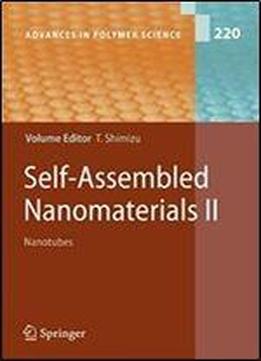
Self-assembled Nanomaterials Ii: Nanotubes (advances In Polymer Science) (no. Ii)
by Toshimi Shimizu /
2008 / English / PDF
5.5 MB Download
Nanotechnology is the creation of useful materials, devices, and systems through the control of matter on the nanometer-length scale. This takes place at the scale of atoms, molecules, and supramolecular structures. In the world of chemistry, the rational design of molecular structures and optimized control of self-assembly conditions have enabled us to control the resultant self-assembled morphologies having 1 to 100-nm dimensions with sing- nanometer precision. This current research trend applying the bottom-up approach to molecules remarkably contrasts with the top-down approach in nanotechnology, in which electronic devices are miniaturizing to smaller than 30 nm. However, even engineers working with state-of-the-art computer te- nology state that maintaining the rate of improvement based on Moores law will be the most dif?cult challenge in the next decade. On the other hand, the excellent properties and intelligent functions of a variety of natural materials have inspired polymer and organic chemists to tailor their synthetic organic alternatives by extracting the essential structural elements. In particular, one-dimensional structures in nature with sophis- cated hierarchy, such as myelinated axons in neurons, tendon, protein tubes of tubulin, and spider webs, provide intriguing examples of integrated functions and properties. Against this background, supramolecular self-assembly of one-dimensional architectures like ?bers and tubes from amphiphilic molecules, bio-related molecules, and properly designed self-assembling polymer molecules has - tracted rapidly growing t.











